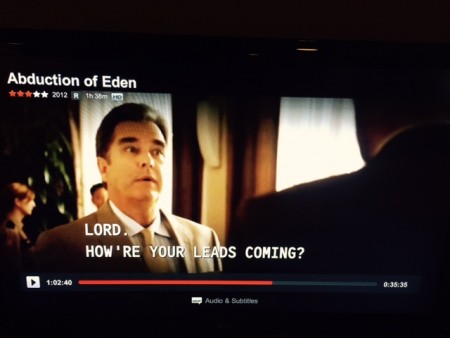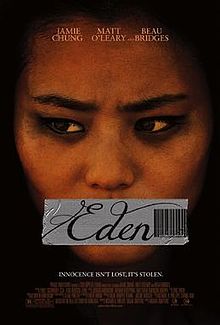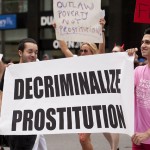Strippers and sex workers have long been used as a trope for others’ agendas. From Chris Rock joking about keeping his daughter “off the pole,” to Dr. Paul Song hollering about “corporate Democratic whores,” the power of this trope relies on a widespread stigmatization of sex workers. It works as a punchline because many assume that strippers cannot be good daughters and that whores cannot be good politicians. When non-sex workers slip in words like “stripper” and “whore,” the crowd goes wild because they see sexually stigmatized individuals — especially if they are feminine or woman identified — as, well, a joke.
So when Kenny Harvard, a Republican State Representative in Louisiana, recently made a “joke amendment” for a new strip club law (no strippers older than 28; no strippers over 160 pounds, in the spirit of “trimming the fat”), it is no surprise that the response from some of his colleagues was: laughter.
In the following days, what has emerged is a very understandable and justifiable outrage at Harvard’s sexist wisecrack. His women colleagues describe this kind of locker room banter as part of a much larger problem faced by women in politics. Pressure has mounted for Harvard to apologize. But thus far, he has steadfastly refused, saying that this was just a joke about government over-regulation, and that he will not cave to “political correctness.”
It is clear that jokes like this only work in a context of misogyny, which often intersects with fatphobia. And Harvard’s “stop with your political correctness” response is so … early 1990s. He, like too many others, misses the point about how it’s just not cool to make people with less social power and privilege than you bear the brunt of your jokes.
However. As sexist as Harvard’s “joke amendment” was, what is being lost in this frenzy is this: he was the *only* legislator to intervene with the harmful bill under debate. While the language of Harvard’s joke amendment has been widely scrutinized, the actual bill being amended has thus far been *completely free* of media critique. Namely, the bill, which was passed unanimously in the House (96-0, including Harvard voting yes!), would raise the legal age from 18 to 21 for women working in strip clubs in Louisiana. Introduced under the guise of anti-trafficking efforts in the name of “protecting” women, if signed into law this bill will very likely serve to hurt the women they claim they want to protect.
The poverty rate in Louisiana is the second highest of any state in the U.S. (after Mississippi; it is the third highest if you also count Washington D.C.) The situation is bad. Folks need livable wages. Before this bill, young women could get a legal and potentially well paying job in a strip club at age 18. They could use that money to pay for school, food, & housing for themselves (and potentially their families). Now young women in need of income must wait another *three years* for this work option. In those three years some of these women will likely land in more precarious and potentially criminalized income generating activities. Allegedly for their own good.
And: There is no evidence that this kind of patronizing and punishing legislation of taking away legal work options helps *actual* victims of trafficking in the sex industry. (See my & Barb Brents’ review of the literature here).
If you really want to help individuals working in strip clubs who are dealing with force, fraud, and coercion (the three critical criteria for qualifying as a human trafficking case), then there are plenty of other strategies. In the words of Alexandra Lutnick:
“If young people’s basic human rights are met, if they have stable and safe housing, employment or another source of income, health care, access to education and welfare benefits, and supportive networks (familial or social) those who really do not want to be trading sex will have other options.” (Domestic Minor Sex Trafficking: Beyond Victims and Villains, 2016, p. 121).
Meanwhile, the vast majority of global human trafficking occurs in jobs *outside* of the sex industry in jobs such as domestic work, agriculture, and construction. No one is making jokes about those workers nor enacting laws to raise the age of legal entry into those forms of work. Instead, what needs to happen in all work environments is securing sustainable and equitable working and living conditions for all individuals, rather than taking away their job options.
So as progressives and conservatives unite in throwing Kenny Harvard under the bus, yet another law is silently and uncritically being slid into creating a legal barrier to employment for poor and young working class young women. All in the name of saving them.














 cohabitation”
cohabitation” 

























